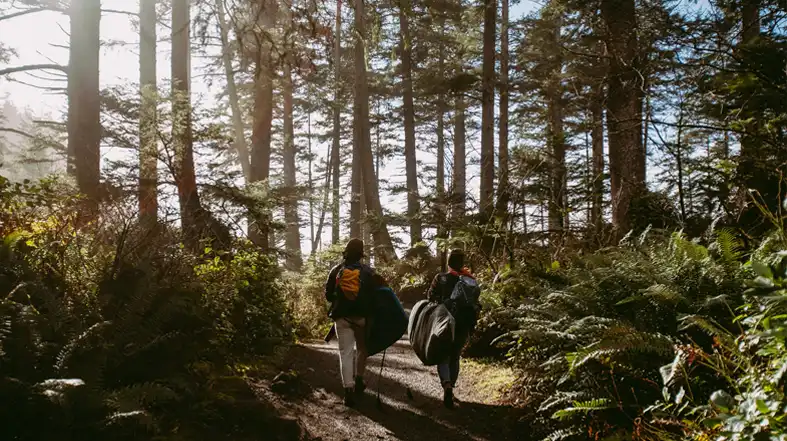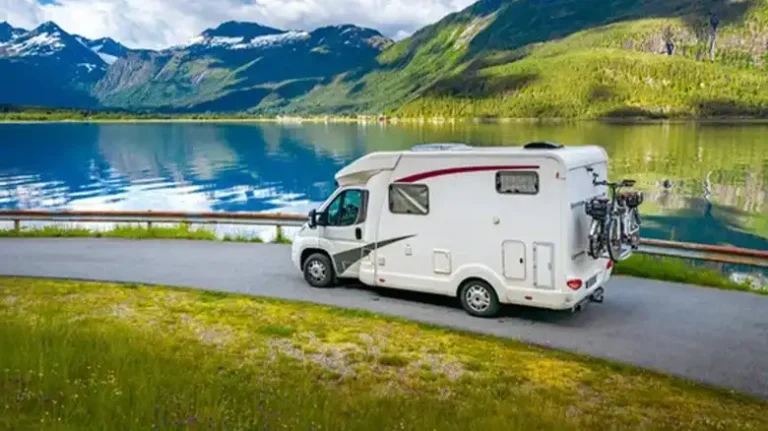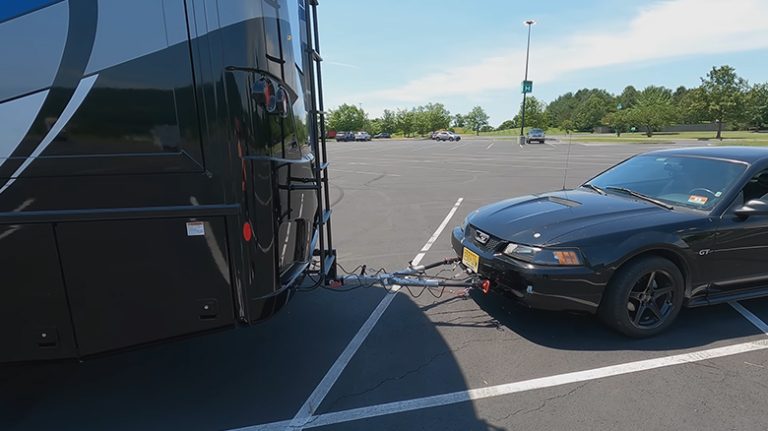Hiking and Nature Exploration | 6 Best Tips
Hitting the open road in an RV and exploring the great outdoors goes hand-in-hand. However, finding the best hiking trails and nature sites that are RV-friendly can be challenging. Strict size limits, narrow roads, and lack of parking make some trails inaccessible. Plus, planning hikes that work for the whole family and not getting lost in unfamiliar terrain poses difficulties.
The good news is with some preparation and research, RVers can discover endless hiking adventures.
We’ll provide a clear overview of how to locate RV-friendly trails, gear up properly, plan routes, and explore nature safely. By the end, you’ll be ready to lace up your boots and discover the wilds from the comfort of your RV.

Plan and Prepare Your RV for Hiking Adventures
Properly preparing your RV helps ensure a smooth journey to trailheads and enjoyable hiking trips. Key steps include:
Tip 1: Locate RV-Friendly Hiking Trails
Finding trails wide enough to accommodate RVs with room to park generally requires checking specific sites. Luckily, many state and national parks offer RV pads steps away from superb paths. Other trails located near public parks or on the outskirts of towns also work well.
- National and State Parks
National and state parks manage millions of acres of wilderness with every terrain type imaginable. Their websites contain maps with RV-accessible trails clearly marked. For example, California’s Topanga State Park lists the Los Liones Trail as RV-friendly with room for several rigs at the parking area.
Government park sites also highlight trail difficulty, distance, elevation changes, and estimated hike duration. This helps match trails to your fitness level and time allotment. Preview photos to discover beautiful vistas awaiting at the end.
- Municipal and County Parks
City, municipal, and county parks contain excellent hiking opportunities minus the crowds of national hotspots. They often surround population centers offering easy access. Park administrators work to accommodate RVs with wide main roads and parking areas.
For example, Colorado’s Lakewood Township manages over 1,300 acres of open space with RV access. Their park website provides trail maps and the guarantee of sites able to handle 40-foot motorhomes.
- Trail Directories
Specialized hiking directories contain useful filters and user reviews. Search for trails permitting pets, RVs, and activities like biking, fishing, swimming, and more. For example, AllTrails.com lets you select “RV and Trailer Friendly” under amenities when browsing.
Focus searches near your target destination. User-uploaded photos and trail descriptions provide helpful insight. Crosscheck reviews on multiple sites to verify accessibility.
Best RV-Friendly Hiking Trails by Region
America’s vast public lands offer thousands of hiking trails for RVs to serve as basecamps. Here are premier picks by region showcasing the landscape’s unique beauty.
- West
The West contains spectacular hiking terrain through colorful canyonlands, jagged peaks, and dry desert washes.
![Hiker overlooking Red Rock Canyon]
- Red Rock Canyon – Nevada
Stunning geological formations and vistas just outside Las Vegas on wide paved RV-ready roads. Features short hikes to petroglyphs, waterfalls, and more.
- Havasupai Falls Trail – Arizona
Waterfall oasis deep inside the Grand Canyon flowing blue-green over limestone. Permit required and often booked out 12 months in advance.
- Glacier National Park – Montana
Almighty mountain scenery with 750 miles of trails. Grinnell Glacier Overlook spans 5.5 miles culminating at a jewel-like cirque lake. Campgrounds fill fast.
- Midwest
Midwestern hikes traverse dense North Woods forests passing waterfalls, widespread prairies, and geological oddities.
- Porcupine Mountains – Michigan
60,000 acres of wild Lake Superior shoreline with hundreds of miles of trails to secluded vistas. Sites accessible for large RVs. Permits required.
- Trek the Ice Age Trail – Wisconsin
Thousand-mile route tracing glacial formations across the state. Easy segments work for short day hikes.
- East
Rugged, peak-filled Northeast ranges challenge hardened trekkers with legendary views as rewards.
- Acadia National Park – Maine
Island oasis with 120 miles of granite-slabbed carriage routes perfect for family-friendly hiking. Reservations are mandatory.
- Shenandoah National Park – Virginia
Blue Ridge Mountains scenery via 500 miles of trails alongside waterfalls and quiet backcountry. Numerous campgrounds are available.
- Adirondack High Peaks – New York
Majestic views from dozens of 4000+ foot summits. Trails range from simple to extremely challenging. RV sites are plentiful on park edges.
- South
Sultry southern climates harbor misty cloud forests, expansive river valleys, and prehistoric cypress groves threaded with footpaths.
- Great Smoky Mountains National Park – Tennessee
World-famous scenery along 800 miles of trails. Camp almost anywhere via RV except at walk-in sites.
- Buffalo National River – Arkansas
America’s first National River with over 150 miles of trails tracing water-carved bluffs teeming with wildlife. Reserve early.
- Canada
Canadians protect immense spans of road-free wilderness roamed only by daring adventurers and wildlife. These iconic routes provide once-in-a-lifetime challenges.
- West Coast Trail – British Columbia
Grueling 47-mile trek traversing rugged ocean cliffs and fog-shrouded old-growth forests. Limit permits to preserve solitude.
- Fundy Footpath – New Brunswick
Stunning cliff-top vistas over the world’s highest tides. 40 miles end-to-end of pure coastal scenery.
Tip 2: Gearing Up Properly
Hiking from an RV basecamp means you can load up on creature comforts not possible on backcountry treks. Pack smartly depending on trail difficulty and weather conditions.
- Navigation Essentials
Even clearly marked paths crisscrossing open plains require basic navigation aids. Every member of your party should carry a paper map and compass. Choose durable models able to withstand weather and wear. Know how to read coordinates and triangulate positions before venturing out.
Pack a GPS device or at minimum load offline mapping apps like Gaia GPS on cell phones. Phones fail, so backup with paper or dedicated devices. For children, attach whistles for emergency signaling.
- Clothing and Footwear
Check weather forecasts and pack layered clothing covering every contingency from blazing sun to freezing winds. Synthetic sweat-wicking fabrics work best. Bring extra socks to change out if your feet get wet. Sturdy hiking boots provide traction and ankle support. Break them in ahead of time.
- Hydration and Nutrition
Dehydration ruins hikes quickly, especially at altitude. Hydrate well the day before. Drink steadily while walking and pack twice as much water as you think necessary. Bring high protein, high energy trail snacks to keep fueled. Chocolate bars, protein powder packets, and trail mix work well.
- Safety and Medical Gear
Cell signals drop off quickly in remote areas. Carry lightweight first aid kits in case of falls, bites, or sprains. Bandages, alcohol wipes, gauze, ointments, ibuprofen, and medical tape account for most needs. Bring emergency blankets, flares, a mirror, a heavy flashlight, and a firestarter kit depending on the conditions.
- Other Gear
Hiking supplies also include trail maps, first aid kits, sun protection, insect repellent, pocket tools, and nutritional snacks. Pack rain gear and extra layers for changeable weather.
Tip 3: Route Planning Best Practices
Careful planning takes the guesswork out of hiking trips before you leave camp. Set realistic goals based on current fitness levels that add enjoyment not exhaustion.
- Match Distance To Ability
Review trail stats to gauge total distance and elevation changes. Gentle paths under 5 miles suit families and novice hikers. Rugged trails over 10 miles with steep grades challenge hardier explorers. Set turn-around times to avoid getting caught after dark.
- Check for Trail Connectors
Many trail systems contain connector loops allowing shortcuts back to the parking lot if energy gets low. Search park maps for bisecting links. Benchmark potential exit points en route in case needed.
- Note Key Waypoints
Mark maps and GPS apps with trailheads, river crossings, mileage markers, peaks, and backcountry campsites. Waypoints keep you oriented and support adjusting routes if needed. Share waypoints so everyone understands the reference points.
- Trail Difficulty Ratings
Park websites rate trail difficulty from easy to extremely hard based on terrain, obstacles, elevation, and mileage. Consider the weakest member’s fitness level when selecting to avoid frustration. Ratings simply provide guidance that helps match expectations.
- Download Maps and Data Offline
Cell signals disappear quickly hiking off-grid. Download offline maps to phones using apps like AllTrails, Google Maps, and Gaia GPS before leaving camp. Test GPS accuracy and battery charging setups. Backup with paper maps and compass. Share waypoints between devices.
Tip 4: Stay Safe While Exploring Nature
RVs serve as perfect basecamps minutes from gorgeous hikes across public recreation lands. Still, responsible planning and common sense mitigate risks from unpredictable weather, wildlife, and accidents far from help.
- Obtain Permits
Many wilderness trails require free permits for parking and day access. Reserve well in advance for popular routes. Display permits on dashboards as required.
- File Trip Plans and Pack Emergency Communications
Leave printed itineraries on your RV dashboard listing trails selected, hike start/end times, and emergency contacts who can dispatch help if you fail to return. Carry personal locator beacons with backcountry rescue subscriptions to quickly summon aid.
- Stick To Marked Trails
Trudging off-trail looks tempting until you get turned around and lost. Stay vigilant for trail markers that ensure proper direction. Turn around before exhaustion clouds judgment compounding dangers.
- Pack Out All Trash
Keep nature pristine by packing out everything you pack in. Ditch no trash, leftover food, plastics, cigarettes, face masks, etc. Use portable ashtrays if smoking. Follow the hiker’s mantra to leave no trace behind.
- Give Wildlife a Wide Buffer
Amazing animal encounters happen routinely on the trail. Yet wildlife behaves unpredictably when startled. Give them a wide berth. Avoid actions causing them to charge or flee in panic.
- Monitor Energy Levels
Fatigue leads to slips, falls, and sprains so rest and snack often. Rate energy levels honestly turning around if reserves feel low. The trail stretches in both directions so be smart. There’s no award for collapsing miles deep into the backcountry due to ego.
- Know Personal Limits
Ambitious plans get humbled quickly in the high peaks. Thinner air and obscured landmarks surprise even veteran explorers. Admitting weakness is not defeat. Listen when the trail talks back saying to stop for now. You can always return better prepared.
- Ready Your Rig
Inspect and adjust tire pressure for off-road conditions. Check ground clearance heights on park roads against your RV’s specs. Evaluate generator runtimes for boondocking needs.
Tip 5: Make Hikes Fun for the Whole Family
Not every gorgeous hike suits young kids and teens making fights inevitable. Compromise choosing less grueling trails tailored to their attention spans. Activities transforming hikes into adventure keep them motivated to explore nature’s beauty.
- Let Them Pick the Destination
Giving everyone map and guidebook access gets them invested right away while building planning skills. Narrow choices based on actual trail ratings and mileage but let the final selection come from them. Ownership adds enthusiasm meaning more smiles across the finish line.
- Make It a Scavenger Hunt
Print out scavenger hunt checklists for things you must photograph like red mushrooms, animal tracks, yellow flowers, circling hawks, etc. The first one to complete the list wins a special treat. You’ll be amazed how this focuses wandering attention.
- Play Trail Games
Classic travel games like 20 Questions, Would You Rather, and License Plate Bingo adapt easily. Make it nature-themed. Quiz tree or bird species and who can match the description. Stop frequently when interesting elements appear on the path to administer challenges and reward winners.
- Pack Fun Trail Snacks
Kids operate on empty faster than adults. Bring surprise candy and snack items only once you reach set milestones. Small incentives spur them on while teaching restraint until the next waypoint. Just leave some M&Ms as final bait to get them back to camp.
- Plan for Pets
When hiking without pets, prepare climate control, restraints, and entertainment to keep them comfortable while camping. Note trails allowing dogs if you prefer their companionship.
- Assign Photography Duty
Handing kid’s dad’s DSLR camera motivates them to frame artistic shots of wildlife, rivers, golden sunset rays piercing the pines, etc. Show them scene composition basics beforehand so they understand the assignments. Then watch creativity bloom as junior Ansel Adams.
- Tell Stories and Share Memories
Hikes turn into history lessons where the land comes alive relaying tales of native peoples, fur trappers, loggers, and homesteaders who walked there long ago. Blend in family stories that give meaning to the places they now walk. Mental time travel quickens the miles.
Tip 6: Capture the Essence of Your RV Hiking Adventure
Looking back long after your boots dry by the fire, potent memories stir again when photos, journals, and stories chronicle your travels along America’s phenomenal hiking trails.
- Landscape Photography
Capture stunning vistas along high ridges and golden light filtering through forests. Learn to frame iconic views and contours. Use smartphones judiciously for wide angles and panoramas.
- Human and Wildlife Subjects
Snap pics of kids, teens, pets, and friends you meet enjoying sights along the way. Show hikers dwarfed standing below giant redwoods and sequoias. Use telephoto zooms to catch wildlife in natural habitats.
- Journal Key Details
Note trail statistics, route observations, sketched vistas, breakfast campsites, and evening reflections of each amazing day. Jot down wisdom heard, lessons learned, geological insights, and trail tips from fellow wanderers.
- Share and Inspire Others
Relaying experiences around evening campfires or presentations at RV gatherings perpetuates our hiking heritage. Well-told stories with quality photos inspire more people towards deeper nature connectedness threatening no one while benefiting all.
Additional Tips for Responsible Hiking
Hikers serve as stewards protecting trails for future generations. Follow these tips when exploring spectacular terrain accessible from your RV.
- Stay on marked trails to avoid trampling fragile alpine growths and flora. Widening paths increase erosion.
- Pack out everything you pack in. Leave no trace of snacks, cigarettes, wrappers, gear, etc.
- Give a sizeable berth when encountering wildlife. Never feed them or entice interaction.
- Inform someone of hiking plans and expected finish times. File printed copies on your dashboard before departing.
Wrapping Up
Hiking from an RV basecamp lets you explore nature’s wildest places while enjoying creature comforts like hot showers, cozy beds, and electricity for charging nightly. Careful selection of RV-friendly trails, packing proper gear, prudent planning, and putting safety first lead to amazing experiences bonding families. We hope these tips help you locate beautiful trails to hike safely from camp. Please comment on any questions below or share your best RV hiking adventures. Now grab your gear and go explore! The ancient mountains and forests call…
Frequently Asked Questions
Q: What Type Of Footwear Works Best For Rv Hiking?
A: The best footwear for RV hiking is lightweight hiking boots or trail shoes with sturdy soles for traction and ankle support. Break them in ahead of time before hitting the trail.
Q: Should You Hike Alone If Camping In An RV?
A: It’s not advisable to hike alone from an RV campsite. Always hike in pairs or groups in case of injury or getting lost. File a trip plan with campsite contacts before departing as well.
Q: How Do You Find Dog Or Pet-Friendly Hiking Trails For RVs?
A: Many hiking directories and park sites contain “pet-friendly” filters showing trails that permit dogs. Always leash pets and pack waste bags. Check seasonal wildlife closures too.
Q: Should Children Wear A Safety Device When RV hiking?
A: Yes, outfit children with a safety whistle to alert others if lost. Teach them to stop moving once separated from the group so their position can be found.







